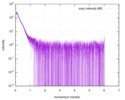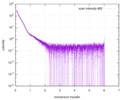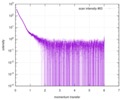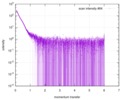+検索条件
-Structure paper
| タイトル | Using stable MutS dimers and tetramers to quantitatively analyze DNA mismatch recognition and sliding clamp formation. |
|---|---|
| ジャーナル・号・ページ | Nucleic Acids Res, Vol. 41, Issue 17, Page 8166-8181, Year 2013 |
| 掲載日 | 2013年7月1日 |
 著者 著者 | Flora S Groothuizen / Alexander Fish / Maxim V Petoukhov / Annet Reumer / Laura Manelyte / Herrie H K Winterwerp / Martin G Marinus / Joyce H G Lebbink / Dmitri I Svergun / Peter Friedhoff / Titia K Sixma /  |
| PubMed 要旨 | The process of DNA mismatch repair is initiated when MutS recognizes mismatched DNA bases and starts the repair cascade. The Escherichia coli MutS protein exists in an equilibrium between dimers and ...The process of DNA mismatch repair is initiated when MutS recognizes mismatched DNA bases and starts the repair cascade. The Escherichia coli MutS protein exists in an equilibrium between dimers and tetramers, which has compromised biophysical analysis. To uncouple these states, we have generated stable dimers and tetramers, respectively. These proteins allowed kinetic analysis of DNA recognition and structural analysis of the full-length protein by X-ray crystallography and small angle X-ray scattering. Our structural data reveal that the tetramerization domains are flexible with respect to the body of the protein, resulting in mostly extended structures. Tetrameric MutS has a slow dissociation from DNA, which can be due to occasional bending over and binding DNA in its two binding sites. In contrast, the dimer dissociation is faster, primarily dependent on a combination of the type of mismatch and the flanking sequence. In the presence of ATP, we could distinguish two kinetic groups: DNA sequences where MutS forms sliding clamps and those where sliding clamps are not formed efficiently. Interestingly, this inability to undergo a conformational change rather than mismatch affinity is correlated with mismatch repair. |
 リンク リンク |  Nucleic Acids Res / Nucleic Acids Res /  PubMed:23821665 / PubMed:23821665 /  PubMed Central PubMed Central |
| 手法 | SAS (X-ray synchrotron) / X線回折 |
| 解像度 | 3.1 Å |
| 構造データ |  SASDA24: MutS tetramer (DNA mismatch repair protein MutS)  SASDAN3:  SASDAQ3:  SASDAX3: MutS tetramer (DNA mismatch repair protein MutS)  SASDAY3: MutS tetramer (DNA mismatch repair protein MutS)  SASDAZ3: MutS tetramer (DNA mismatch repair protein MutS)  PDB-3zlj: |
| 由来 |
|
 キーワード キーワード | DNA BINDING PROTEIN/DNA / DNA BINDING PROTEIN-DNA COMPLEX / DIMER MUTANT / MISMATCH REPAIR / DNA REPAIR PROTEIN / DNA DAMAGE / NUCLEOTIDE-BINDING / ATP-BINDING |
 ムービー
ムービー コントローラー
コントローラー 構造ビューア
構造ビューア 万見文献について
万見文献について




